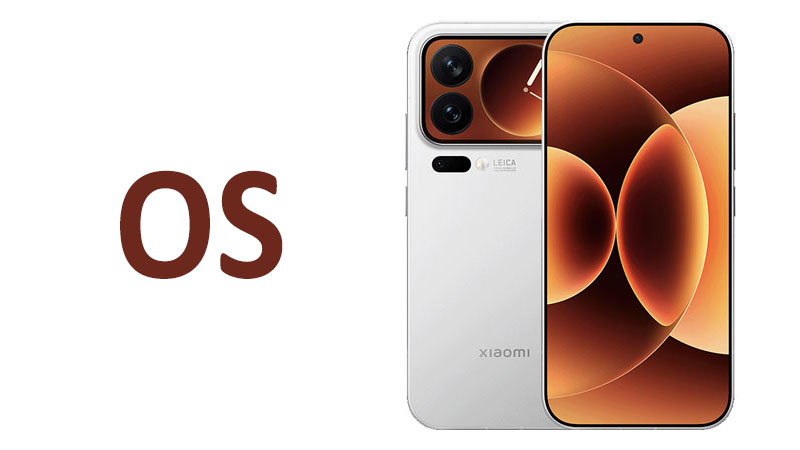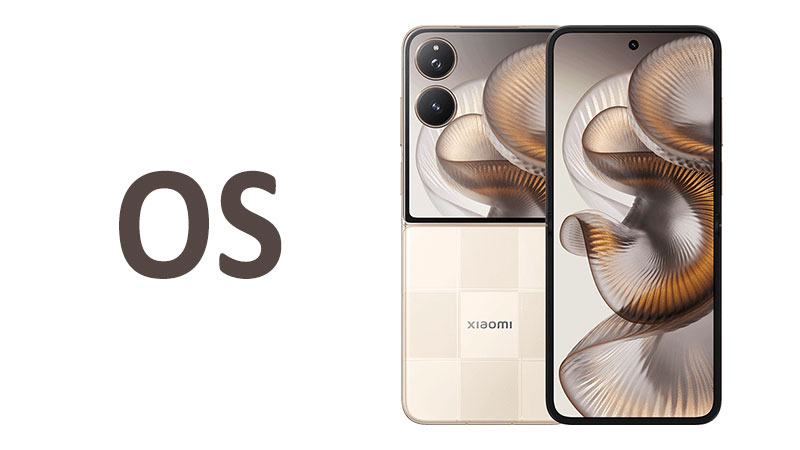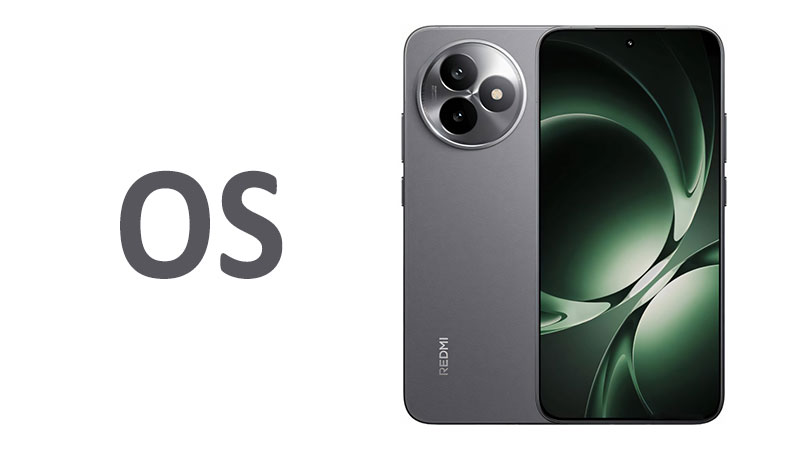The Xiaomi 17 Pro OS represents a watershed moment for mobile software. This new operating system combines the robust security of Android 16. It also features the deeply customized and powerful HyperOS 3 layer. This dual-platform approach aims to deliver a seamless user experience. It promises peak performance and unparalleled device connectivity. This comprehensive review explores every facet of this advanced mobile platform. We will analyze the core system’s enhancements from Google. We will also detail Xiaomi’s ambitious HyperCore architecture and AI integration.
The Dual Architecture: Android 16 Powers HyperOS 3
The software running on the Xiaomi 17 Pro is built on two key layers. The bedrock is the latest Android 16 kernel and APIs. This foundation ensures platform stability and access to modern features. Layered over this is Xiaomi’s proprietary HyperOS 3 environment. This overlay handles the entire user interface, aesthetics, and ecosystem management. This unique structure ensures both high-level functionality and deep-level optimization. Xiaomi seeks to deliver a cohesive experience across all its devices.
HyperOS 3 is far more than a simple visual skin. Xiaomi engineered it as a fully integrated operating system. This deep integration allows for superior resource allocation and management. The result is a system that feels exceptionally fluid and responsive. Earlier versions of MIUI often suffered from perceived bloat and slowdowns. HyperOS 3 directly addresses these past performance concerns. It leverages the lower-level efficiencies that Android 16 provides. This creates a remarkably fast and stable user environment.
Android 16: Foundational System Improvements
Android 16 provides the critical platform upgrades for the Xiaomi 17 Pro OS. These enhancements focus on three pillars: security, accessibility, and raw system performance. Google’s unwavering commitment to user protection is clear in this release. These core features benefit every person who uses the Xiaomi 17 Pro device.
Enhanced Security and Privacy Protocols
Android 16 significantly enhances overall device safety and data integrity. The new Theft Detection Lock is a vital security feature. It uses on-device artificial intelligence (AI) to recognize unauthorized movement. If the system detects theft, it automatically locks the phone. This proactive layer provides robust protection for sensitive personal data. It works instantly and without requiring remote input.
The Advanced Protection Mode offers stronger defense against sophisticated cyberattacks. This mode specifically assists public figures and security-conscious individuals. It more effectively defends against malicious applications and phishing scams. Furthermore, sensitive notifications are concealed by default on the lock screen. This change prevents others from viewing private information instantly. Even one-time passwords (OTPs) remain hidden from unauthorized lock screen views. This subtle change drastically improves daily privacy.
Specialized Comparison: Android 16’s Theft Detection Lock vastly improves upon prior Android versions. Older systems typically required manual remote wiping or logging in to lock the device. The new proactive, location-aware locking mechanism is highly superior. It provides instant peace of mind to users concerned about physical device security globally.
System Efficiency and Interface Refinements
Google continues to polish the user interface with its Material 3 Expressive design language. This new iteration emphasizes dynamic animation and richer color palettes. It allows for better visual contrast and much greater personalization choices. The overall system responsiveness is dramatically improved. A new motion physics engine drives these gains. All transitions and gestures feel smooth, natural, and highly refined.
Android 16 introduces a vital feature called Notification Cooldown. This feature helps to reduce distractions from rapid notification bursts from a single app. The system temporarily lowers the alert volume for subsequent pings. This minimizes alerts for up to two minutes during busy periods. Live Updates are another key feature for convenience. These progress-centric notifications allow users to track real-time app status directly in the notification bar. Users can track food deliveries or ride-share arrivals easily and at a glance.
Pros of Android 16 Foundation:
- Proactive theft and scam protection are now superior.
- A new motion physics engine creates a much smoother device feel.
- Notification Cooldown effectively reduces digital fatigue.
- Better contrast and customization options through Material 3 Expressive.
Cons of Android 16 Foundation:
- The new security settings may require more detailed user permissions management.
- Material 3 Expressive relies heavily on color theming. This may not appeal to users who prefer simpler, monochrome interface designs.
HyperOS 3: The User Experience and Performance Revolution
HyperOS 3 is Xiaomi’s flagship interpretation of the Android 16 base. It is entirely built upon the company’s ambitious HyperCore architecture. This integrated operating system aims to unify Xiaomi’s vast product ecosystem. This includes smartphones, tablets, smart home appliances, and electric vehicles. The “Human-centric” design philosophy is the guiding force behind every feature and design choice.
Performance Deep Dive: The HyperCore Architecture
Xiaomi engineered HyperCore for maximum system efficiency and a minimal storage footprint. The base system firmware on the Xiaomi 17 Pro is remarkably lightweight. This represents a significant improvement over the large install sizes of many competing operating systems. HyperOS 3 boasts highly optimized process and resource management. It uses dynamic thread priority adjustment for consistently peak performance.
The lightweight design translates directly into faster application startup times. It also results in significant improvements in power efficiency and longevity. Refined scheduling capabilities ensure the phone’s powerful hardware operates optimally. This high efficiency is maintained even during complex, simultaneous multi-tasking scenarios. HyperCore manages system resources with greater intelligence than ever before.
Specialized Comparison: HyperOS 3’s HyperCore is engineered to be notably more efficient than its predecessor, MIUI. Older MIUI versions faced criticism for excessive battery drain and high memory consumption. HyperOS 3 utilizes its low-level access to deliver measurable and consistent performance improvements. It sets a new and higher standard for Xiaomi software optimization across the board. The architecture ensures that the Xiaomi 17 Pro can handle any task smoothly.
Alive Design Philosophy and Visual Interface
The aesthetic overhaul in HyperOS 3 is perhaps its most immediate and noticeable change. The “Alive Design” philosophy introduces a fresh, vibrant, and highly kinetic visual experience. System-wide animations have been meticulously refined and timed. They provide a fluid and totally seamless look during all user interactions. Every swipe and tap feels natural and responsive.
Cinematic Lock Screen and New Iconography
The Lock Screen features extensive and innovative new customization options. Users can now add cinematic depth and dimension to the digital clock widgets. They can also apply powerful AI styles to background images. This feature is marketed as the Movie Lock Screen. AI can process photos to add effects, such as “Ghibli-fying” the scene. It can also add a dreamscape or watercolor effect to photos. This creates stunning dynamic visuals that appear upon unlocking the device.
The home screen introduces all-new, refined application icons. These icons feature a slightly more three-dimensional and layered appearance. The overall default layout is cleaner and notably more uniform. The Control Center has also been intelligently reorganized for improved accessibility. It centralizes all primary customization options for the home screen and Always-On Display settings.
The Evolved HyperIsland Feature
HyperOS 3 reintroduces and evolves the dynamic pill-shaped feature known as the Xiaomi HyperIsland. This feature centers around the front-facing selfie camera cutout. It provides crucial glanceable information and live activity updates seamlessly. Users can now interact with the notification area in new ways. Swiping down on the pill can open a floating window for the current active app. This provides quick access to ongoing tasks without interrupting the main screen workflow. It is a massive boost to one-handed multitasking efficiency.
Pros of HyperOS 3 Interface:
- The visually stunning and highly customizable lock screen effects are engaging.
- The HyperCore architecture ensures consistently exceptional speed and power efficiency.
- The operating system is highly lightweight, consuming minimal initial storage space.
- Alive Design delivers fluid animations and superior visual cohesion.
Cons of HyperOS 3 Interface:
- Some users might find the AI-generated visuals to be complex or overly distracting.
- The extensive customization may initially overwhelm users. They may prefer a simpler, clean stock Android appearance.
- The redesigned Control Center requires a minor adjustment period for previous users.
HyperAI and HyperConnect: Intelligence and Interoperability
The true differentiating factor of the Xiaomi 17 Pro OS lies in its intelligence and connectivity capabilities. HyperOS 3 features deep AI integration. It specifically leverages Google’s powerful Gemini large language models. Furthermore, it utilizes the HyperConnect framework to achieve seamless cross-device communication. These two technologies work together to create a unified and intelligent smart ecosystem.
HyperAI: Proactive and Generative Intelligence
HyperAI transforms core system applications by leveraging advanced foundation models. The Xiaomi AI Assistant gains significant new generative text capabilities. Users can instantly access features like speech generation and sophisticated summarization tools. It acts as an omnipresent digital assistant.
AI Enhanced Productivity and Creativity
The Notes application now features an advanced DeepThink mode. This powerful mode generates thoughtful insights and high-quality content based on the user’s input notes. New system-wide AI writing features can refine, expand, or correct text across the entire OS. This functions as a powerful, integrated writing assistant accessible in any text field. The system also offers AI audio recognition for accurate real-time transcription. It can also automatically summarize long recordings and accurately mark different speakers. This saves hours of manual review.
Advanced image search capabilities use on-device AI to greatly optimize results. It supports tens of thousands of keywords and numerous content categories. The AI can even aggregate photos of specific individual pets using their body features and distinguishing marks. This makes searching vast photo albums incredibly fast and exceptionally accurate.
Important Points for the Reader: HyperAI uses a combination of cloud and on-device processing power. This dual approach ensures immediate speed for common tasks while maintaining core data privacy. Users must understand that many of the most advanced generative features require a stable, active internet connection for model execution.
HyperConnect 2.0: The Cross-Device Ecosystem
HyperConnect 2.0 is the most critical piece of Xiaomi’s “Human-centric” vision. It effectively removes all boundaries between the smartphone and other connected devices. This framework creates truly seamless interactions across the entire product line. This includes phones, tablets, and desktop computers.
Seamless Interoperability Across Platforms
The Integrated Device Center allows users to control nearly their entire array of connected devices. They can manage the interconnected ecosystem from the Xiaomi 17 Pro effortlessly. Innovative features like touch-to-share enable quick, secure transfer of files and Wi-Fi network passwords. This touch-to-share functionality now works across devices, including major non-Xiaomi devices like iPhones and MacBooks. This vastly expands its utility.
The Home Screen+ feature further enhances desktop productivity. Users can now mirror phone applications onto a Xiaomi tablet or laptop display. They can run these mirrored apps in resizable, desktop-style windows. This supports true, powerful multi-window multitasking on large screens. Other continuity features include shared universal clipboards and instant hotspot connectivity. Users can also unlock their Xiaomi 17 Pro using their paired MacBook’s Touch ID sensor for convenience.
Specialized Comparison: Xiaomi’s HyperConnect 2.0 is an aggressive challenge to competitors such as Samsung DeX and Apple Continuity. Unlike DeX, which demands a separate desktop mode interface, HyperConnect integrates phone apps directly into existing desktop environments. Its unparalleled cross-ecosystem support, particularly with Apple hardware, gives it a substantial competitive advantage. This bridges a significant gap most other Android manufacturers consistently neglect.
Pros of HyperAI and HyperConnect 2.0:
- Agentic AI can execute complex, multi-step tasks on the user’s behalf.
- Unrivaled cross-ecosystem connectivity supports non-Android hardware effectively.
- HyperConnect 2.0 boosts productivity with seamless multi-device usage scenarios.
- DeepThink mode revolutionizes note-taking and content creation.
Cons of HyperAI and HyperConnect 2.0:
- Reliance on the broader Xiaomi ecosystem limits feature sets for new users.
- The extensive nature of AI integration inevitably raises long-term privacy concerns for some users.
- Initial setup of the cross-device pairing can be slightly complex for novices.
A Buyer’s and Reader’s Guide to the Xiaomi 17 Pro OS
Potential buyers and technology enthusiasts must carefully consider several key factors. The Xiaomi 17 Pro OS merges high-end hardware optimization with complex, feature-rich software. This section outlines the essential considerations for any interested party.
Stability and Regional Software Variations
Early versions of any major new operating system can occasionally face stability issues. HyperOS 3 is expected to follow this trend as it rolls out across global markets. Xiaomi has a history of regional software differences and restrictions. Users should realistically expect variations in advanced AI feature availability. These variations often depend on their specific geographic location. Some powerful AI functions might initially remain exclusive to the Chinese market. Global users should always check reviews specific to their region for the latest update status and feature parity.
The Learning Curve for New Customization
The degree of customization options in HyperOS 3 is undeniably both a strength and a potential weakness. Users new to Xiaomi devices will face a noticeably steeper learning curve. Features like the Cinematic Lock Screen and HyperIsland require a period of adjustment. Dedicated stock Android users might initially prefer a simpler, less cluttered UI layout. However, the system’s incredible flexibility richly rewards users. It favors those who invest the necessary time in personalized setup and optimization.
Battery Life and Performance Trade-offs
The HyperCore architecture fundamentally promises superior and extended battery life. It achieves this goal through highly efficient scheduling and a lightweight system kernel. However, constant use of high-demand features can still impact overall longevity. Frequent use of AI dynamic wallpapers or running multiple mirrored apps via HyperConnect will consume battery faster. The core performance gains remain significant for general use, photography, and high-intensity mobile gaming. Users must manage their feature usage consciously.
The Ecosystem Lock-in Strategy Explained
HyperOS 3 strongly encourages users to adopt the full Xiaomi product ecosystem. The very best, integrated features work only between various Xiaomi or partner devices. This includes advanced capabilities like split-task processing and integrated central control. While the OS offers some useful iPhone connectivity, the experience is maximized. This happens when using a Xiaomi phone, tablet, smart TV, and wearable together. Buyers should fully understand this aspect. They maximize the OS’s potential by investing in multiple supporting Xiaomi products.
Software Update Commitment and Longevity
Xiaomi’s commitment to delivering timely and consistent software updates is a crucial factor. Flagship devices, such as the Xiaomi 17 Pro, typically receive a lengthy commitment. This often means four years of major Android version upgrades. They usually receive five years of critical security patches. Prospective buyers should verify the exact support timeline for their specific device model. This planned longevity ensures the phone remains secure, modern, and feature-rich for many years to come.
Pros of the Xiaomi 17 Pro OS:
- Exceptional performance optimization due to the foundational HyperCore rewrite.
- Cutting-edge AI features driven by Gemini for improved productivity and creativity.
- Industry-leading cross-device connectivity, supporting non-Android products widely.
- A visually stunning and highly customizable user interface design is included.
- Strong commitment to modern security standards with proactive threat detection.
Cons of the Xiaomi 17 Pro OS:
- Feature parity may significantly vary between the Chinese and Global software versions.
- Achieving the full benefits requires owning multiple Xiaomi or partner devices fully.
- Aggressive customization options can feel initially complex to users accustomed to simpler stock Android.
- Historical concerns about battery optimization on specific mid-range devices could still persist.
Conclusion: A Next-Generation Integrated Mobile Platform
The Xiaomi 17 Pro OS, built upon Android 16 and HyperOS 3, represents a decisive strategic move. It is far more than a simple iterative software update. It is a fundamental shift toward a deeply interconnected and intelligent device ecosystem. Xiaomi has expertly leveraged Android 16’s security infrastructure and core performance base. They then overlaid a sophisticated, feature-rich, and highly efficient custom user experience.
HyperOS 3 truly stands out because of its advanced HyperAI and superior HyperConnect solutions. The HyperCore architecture promises raw, sustainable speed and efficiency gains. Features like the evolved HyperIsland and the Cinematic Lock Screen add both flair and substantial functionality. Consumers seeking the absolute pinnacle of mobile innovation should strongly consider this OS. Users must evaluate if they are prepared to fully embrace the larger Xiaomi ecosystem. This system offers a powerful, integrated, and visually impressive alternative to rival offerings. It elevates the flagship Xiaomi 17 Pro user experience considerably.
Frequently Asked Questions (FAQ)
1. Is HyperOS 3 a brand-new operating system, or is it based on Android?
HyperOS 3 is not a completely new operating system entirely from scratch. It utilizes the core kernel and security features of Android 16. Xiaomi built it using a customized architectural layer called HyperCore. This layer replaces much of the standard Android UI and framework for efficiency.
2. Does the Xiaomi 17 Pro OS fully support all Google services?
Yes, the global version of the Xiaomi 17 Pro OS fully supports Google Mobile Services (GMS). Users can easily access the Google Play Store, Gmail, and all other standard Google applications. This ensures seamless Western app compatibility and integration.
3. What is the biggest key difference between HyperOS 3 and the previous MIUI software?
HyperOS 3 is a complete architectural refactoring process known as HyperCore. It is fundamentally designed to be much lighter and far more efficient than the older MIUI. It also focuses heavily on advanced cross-device connectivity and deep, generative AI integration across the system.
4. Will I still be able to extensively customize the visual look of the Xiaomi 17 Pro OS?
Customization is intentionally a major and primary focus of HyperOS 3 design. It offers extensive control over the entire lock screen, individual icons, and system themes. The new Alive Design philosophy provides powerful and granular tools for complete personalization.
5. What is the HyperConnect feature and which user benefits the most from it?
HyperConnect enables seamless, instant collaboration between all devices. It allows tasks like mirroring phone apps onto a tablet or laptop screen. Users who own multiple Xiaomi devices gain the most significant benefit from these powerful cross-device continuity features.



